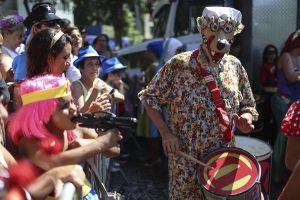
Rio de Janeiro, Feb 11 (EFE).- The Brazilian metropolis of Rio de Janeiro is making final preparations for its annual carnival, an event that attracts 2 million tourists annually and brings in nearly $2 billion in revenue.
The city offers a range of alternative for all tastes and budgets during the pre-Lenten festival, from a visit to the mythical Sambadrome to witness the parade of samba schools to the Magic Ball at the Copacabana Palace Hotel to parties organized by street bands, known as “blocos,” that play samba or marchinhas, a polka-type music.
Although the first Rio carnival dates to the mid-17th century, it was not until the birth of the samba schools (associations or social clubs that represent a particular neighborhood in the annual samba parade) in the city’s Little Africa neighborhood in the 1920s that the event became a mass celebration known locally as the “world’s biggest spectacle.”
The carnival’s signature event, the parade of samba schools, was transferred in 1984 from downtown Rio to the Sambadrome, an 80,000-seat venue designed by the late architect Oscar Niemeyer.
Tickets are hard to come by at the “temple of samba,” ranging from between $70-$160 per person in the bleachers to between $1,430 and $2,500 for a group of six people in the front row. Luxury suites can cost as much as $40,000 for a single night.
Those who prefer street parties can join the huge crowds centered around one of several hundred blocos, which begin parading weeks before carnival begins.
There are blocos for all tastes and ages, but the Cordao da Bola Preta, which mobilizes nearly 1 million party-goers in downtown Rio and also is the parade with the most reports of pickpocketing, is clearly the most popular of all.
